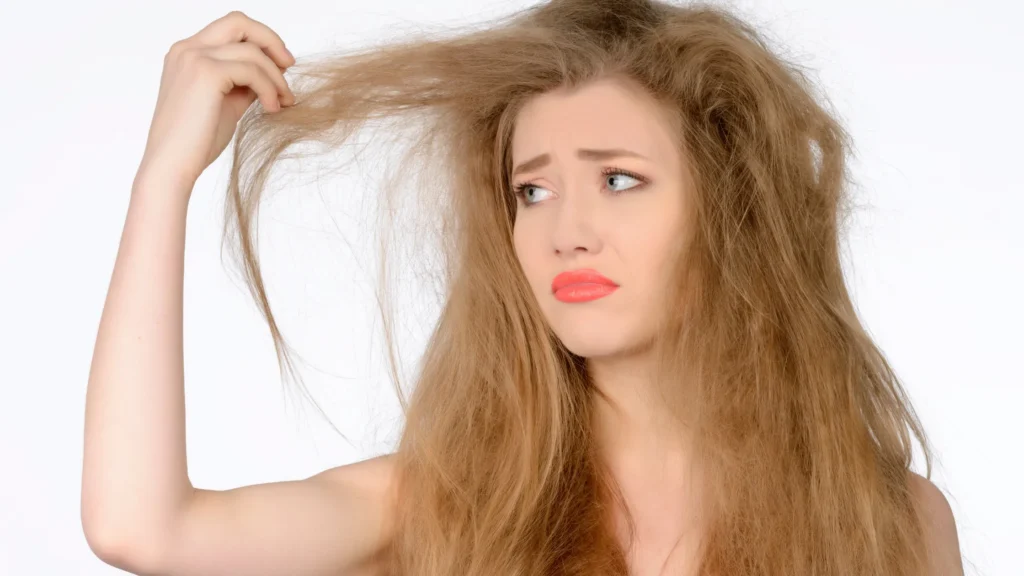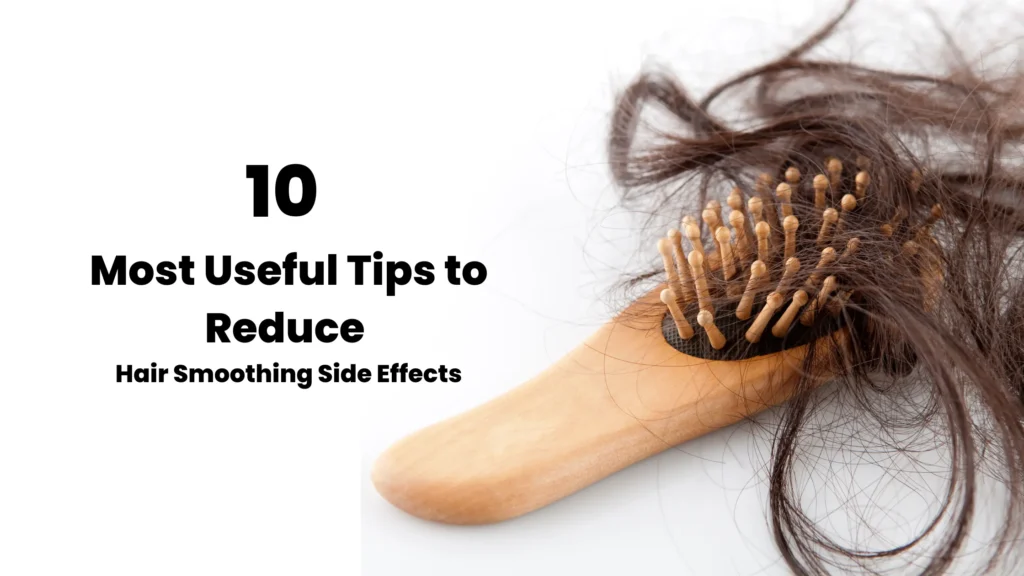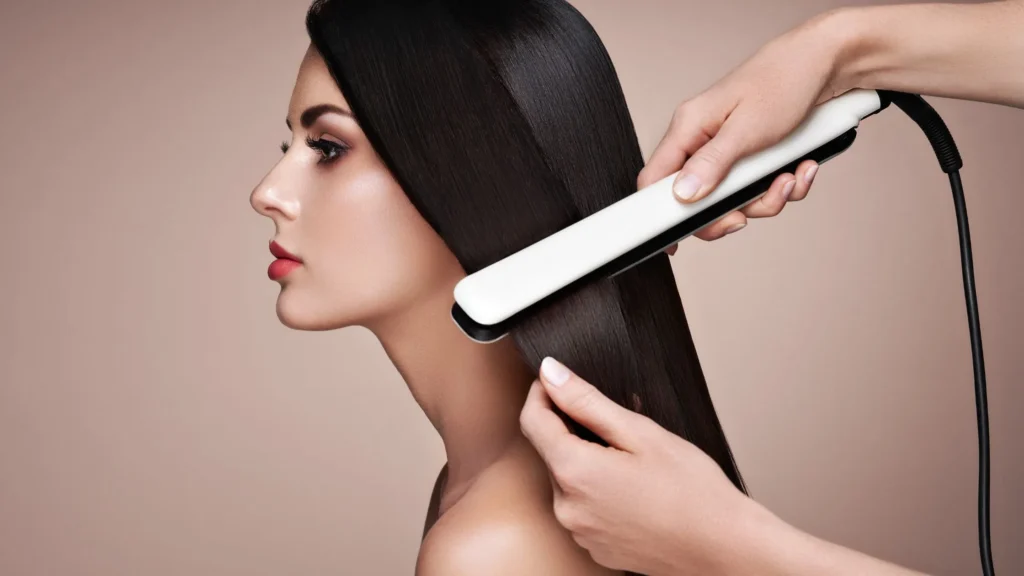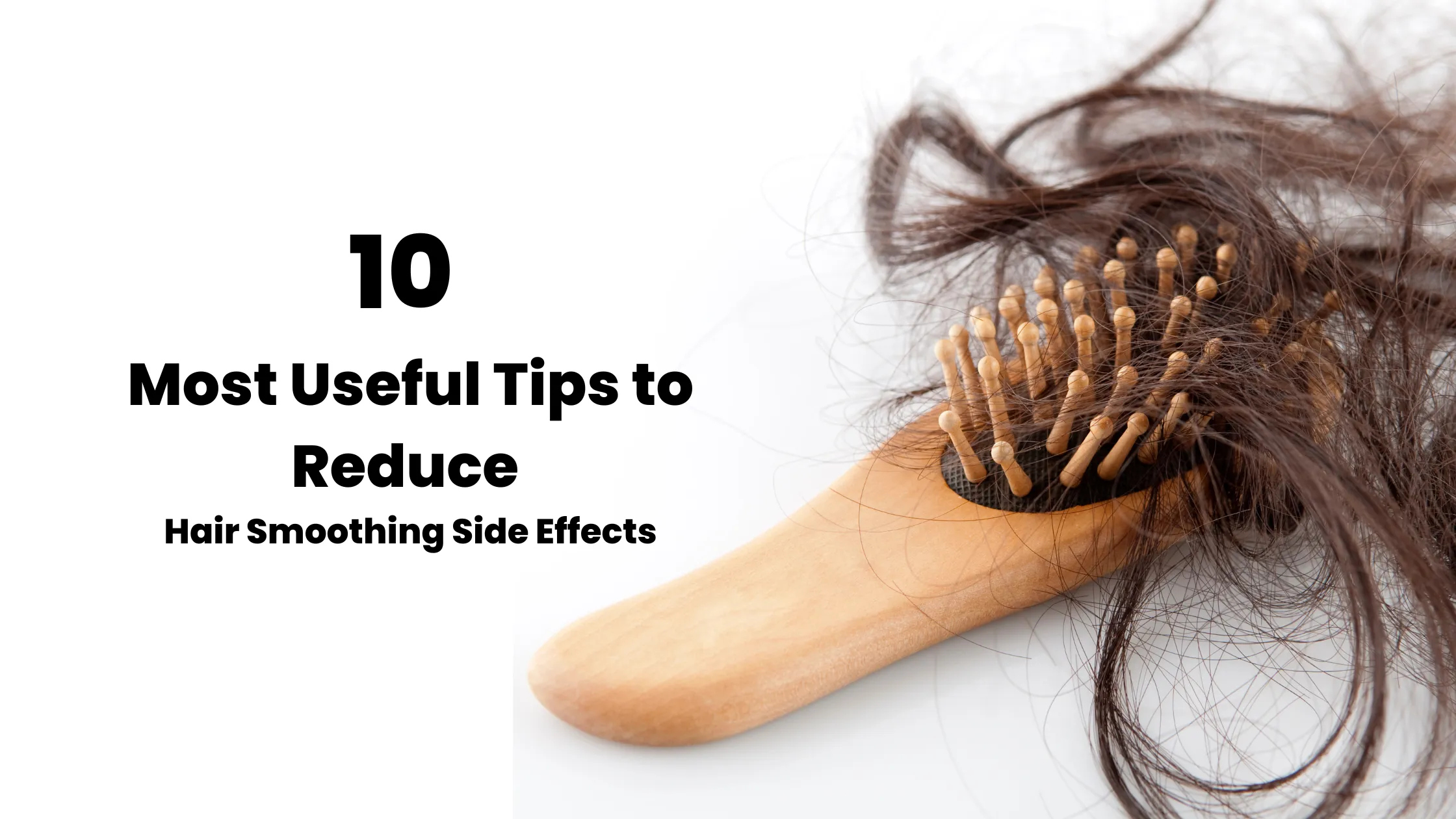Know everything about Hair Smoothening Side Effects and how to reduce them, what are the alternatives. In this article, you will know all about Hair Smoothning Facts that you have never heard before.
A common salon service that guarantees sleek, frizz-free hair is hair smoothening. This method is frequently used by people who want to look straight and manageable. But, there are several Hair smoothing side effects, they are like any chemical-based therapy. In this post, we’ll describe all about Hair Smoothening Side effects and about how to reduce them.
What is Hair Smoothening?
Hair smoothening is a chemical treatment used to straighten and smooth curly or frizzy hair. It is also known as hair relaxing or thermal reconditioning. The procedure involves the use of a chemical relaxer or keratin-based product that modifies the structure of the hair to give it a straighter appearance. This treatment is normally administered by skilled experts in a salon setting.
The Process of Hair Smoothening
To get the desired results, hair smoothening entails multiple steps. The procedure might vary based on the particular products and techniques utilized, but it usually consists of a few steps:
- Hair Assessment: A stylist assesses the texture, thickness, and condition of the hair to decide the best treatment.
- Hair Washing: The hair is washed and conditioned completely to remove product buildup and prepare it for the smoothing procedure.
- Smoothening Solution Application: The relaxer or keratin-based formula is applied to the hair, often beginning at the roots and working towards the ends. Depending on the hair type and desired outcomes, the solution is applied to the hair for a specific duration of time.
- Heat Application: To straighten and smoothen the hair shaft flat iron or hot comb is generally used.
- Neutralizing and Rinsing: Some neutralizing agents may be applied to stop the chemical process and restore the hair’s pH balance.
- Blow-Drying and Styling: to enhance the straightening effect Blow drying is required.
Hair Smoothening Side Effects

Hair smoothing can produce good results, but it’s important to be informed of any possible negative effects before undergoing the procedure. Some frequent adverse effects include:
- Allergic Reactions
- Hair Damage and Breakage
- Scalp Irritation and Sensitivity
- Chemical Burns
- Hair Loss
Allergic Reactions
Chemicals found in hair smoothing products may cause allergic responses in certain people. Itching, redness, swelling, or a rash on the scalp or close to the hairline are signs of an allergic reaction. It is crucial to get quick medical help and stop using the product if you suffer any of these symptoms.
Hair Damage and Breakage
The chemicals employed in hair smoothing treatments have the potential to weaken the hair shaft, causing breaking and damage to the hair. The hair could become split-end-prone, dry, and brittle. Additional hair damage might result from using too much heat when smoothing hair. It’s vital to remember that the degree of hair damage might differ depending on personal elements including hair type, condition, and stylist skill.
Scalp Irritation and Sensitivity
Treatments for hair smoothing can result in sensitivity and irritation of the scalp. The smoothing solution’s ingredients could irritate the scalp and cause irritation, redness, itching, or a burning sensation. These adverse effects can be more common in people with sensitive skin or those who already have scalp issues.
Chemical Burns
Chemical burns to the scalp or skin might occur if the smoothing solution is applied incorrectly or used incorrectly. This can happen if the stylist doesn’t properly follow the guidelines or if the solution is applied to the hair for an excessively long time. Chemical burns can be uncomfortable and may need medical care to stop the infection and speed up healing.
Hair Loss
Hair smoothing treatments might cause hair loss or thinning in some circumstances. Chemical relaxers used in the procedure might weaken hair follicles, resulting in excessive shedding or even permanent hair loss. When the treatment is conducted poorly or without adequate care, this adverse effect is more likely to develop.
10 Most Useful Tips to Reduce Hair Smoothing Side Effects

- Select a Reputable and Professional Stylist: Select a reputable and professional stylist who specializes in hair smoothening treatments. A trained specialist will ensure accurate application while minimizing harm risk.
- Consultation and Hair Assessment: Before beginning the treatment, consult with your hairdresser thoroughly. Discuss your hair type, past chemical treatments, and any sensitivities with your stylist to see if hair smoothening is right for you.
- Patch Test: Before the actual therapy, request a patch test. This aids in the identification of any unwanted reactions or allergies to the chemicals employed in the smoothening procedure.
- Follow Instructions: Pay strict attention to your stylist’s aftercare recommendations. These may contain instructions for washing, styling, and utilizing gentle and ideal for smoothened hair care products.
- Avoid Heat Styling: Use heat-styling products like flat irons and curling wands sparingly, as they can damage the hair and increase the chance of breakage. When possible, embrace natural hairstyles.
- Use heat Protectant: Use a heat-protectant spray or serum whenever heat styling is required to protect your hair from excessive heat and minimize any harm from styling equipment.
- Moisturize daily: Regularly moisturizing will help prevent dryness and brittleness in your hair. To hydrate and replenish moisture in the hair, use natural oils, leave-in conditioners, or hydrating hair masks.
- Steer clear of harsh chemicals: Sulphates, parabens, and alcohol are among the harsh chemicals that can strip the hair of its natural oils and cause more harm. Choose nutritious, gentle, and sulfate-free products.
- Limit Chemical Treatments: Avoid having your hair smoothed concurrently with other chemical processes like coloring or perming. Overuse of chemicals can weaken hair and increase the possibility of injury.
- Schedule Regular Trims and Maintenance: To keep the hair healthy and free of split ends, schedule routine trims. Follow your stylist’s advice regarding touch-up treatments to preserve the smoothed result without over-processing.
Some More Tips to Reduce Hair Smoothening Side Effects

To minimize hair smoothening side effects and maintain healthy hair, it’s essential to follow proper maintenance and aftercare routines. Here are some tips to consider-
- Use Sulfate-Free Products: Choose sulfate-free shampoos and conditioners formulated specifically for chemically treated hair. These products are mild and help to maintain the smoothing effects while also nourishing the hair.
- Deep Conditioning Treatment: Hydrate your hair on a regular basis with deep conditioning treatments or hair masks to restore moisture and avoid dryness and breakage.
- UV Ray Protection: Protect your hair from damaging UV rays by wearing a hat or using UV-protective hair products, especially if you spend a lot of time outside.
Alternatives to Hair Smoothening
Because there are lots of Hair Smoothening side effects, you may apply different alternative techniques, they are:-
Keratin treatments: Keratin treatments are becoming more popular as a less harmful option for hair smoothening. In order to lessen frizz and make hair easier to manage, these treatments use a protein-based mix incorporating keratin. The structure of the hair is not permanently changed by keratin treatments, in contrast to conventional smoothening procedures. Rather, they function to briefly cover the hair shaft, giving it a shiny and smooth appearance. For a safer experience, it’s crucial to do the necessary research and pick a brand that offers formaldehyde-free choices because certain keratin treatments may still include specific chemicals.
Deep Conditioning Treatments: Deep conditioning treatments are an excellent way to feed and hydrate your hair, ultimately minimizing frizz and boosting its natural texture. These treatments entail the application of a rich conditioner or hair mask that is supposed to penetrate deep into the hair shaft and provide intense moisture and nutrients. Look for deep conditioning products that contain moisturizing components like shea butter, argan oil, or coconut oil. Regular deep conditioning treatments can dramatically improve the overall health and look of your hair.
Oil Massages: Massaging your scalp and hair with natural oils will help stimulate circulation, nourish hair follicles, and give shine to your locks. Coconut oil, olive oil, and almond oil are all wonderful possibilities for this. Simply warm the oil slightly and massage it into your scalp before distributing it through your hair’s lengths. Allow it to sit for a few hours or overnight for maximum benefits before rinsing. Oil massages on a regular basis can help eliminate frizz, thicken the hair, and make it more manageable.
Protective Hairstyles: Protective hairstyles are a popular choice for people who wish to reduce their exposure to heat and chemicals while yet having sleek-looking hair. Braids, twists, buns, and updos can help preserve your hair from environmental damage and over-manipulation while also reducing frizz and fostering healthy hair growth. Avoid tight styles that can create tension and breakage by using soft hair ties.
Embracing Natural Texture: Instead of changing your hair’s natural texture, embrace and improve it. This is using products and style procedures that enhance the natural waves, curls, or texture of your hair. Choose curl-enhancing creams, mousses, or gels to define and energize your natural hair pattern. To obtain the desired effect, use different style techniques like diffusing, plopping, or twist-outs.
Note: By trying out these alternative ways, you can get smoother, more manageable hair while controlling the Hair Smoothening side effects. Adopting natural treatments not only promotes hair health but also allows you to enjoy and enhance your own hair texture.
To Know more about different SIDE EFFECTS related information CLICK HERE
Conclusion
Hair smoothening can give you the ideal sleek and straight look, but you should be aware of the hair smoothening side effects. The most common Hair Smoothening side effects are allergic reactions, hair damage, scalp irritation, chemical burns, and hair loss. You can reduce the hazards associated with hair smoothening by taking adequate precautions, following maintenance regimens, and choosing reputed establishments with competent stylists.
It is critical to make an informed decision and balance the potential negative consequences against the desired end. If you’re unsure or worried about the risks, alternate approaches such as keratin treatments or natural haircare practices may be a safer option.
FAQs (Frequently Asked Questions
Is hair smoothening suitable for all hair types?
Yes, it is suitable for all hair types.
Can I color my hair after smoothening?
Best to wait for a few weeks after smoothing the hair. Before adding more chemicals, give your hair the necessary time to heal and restore its strength.
